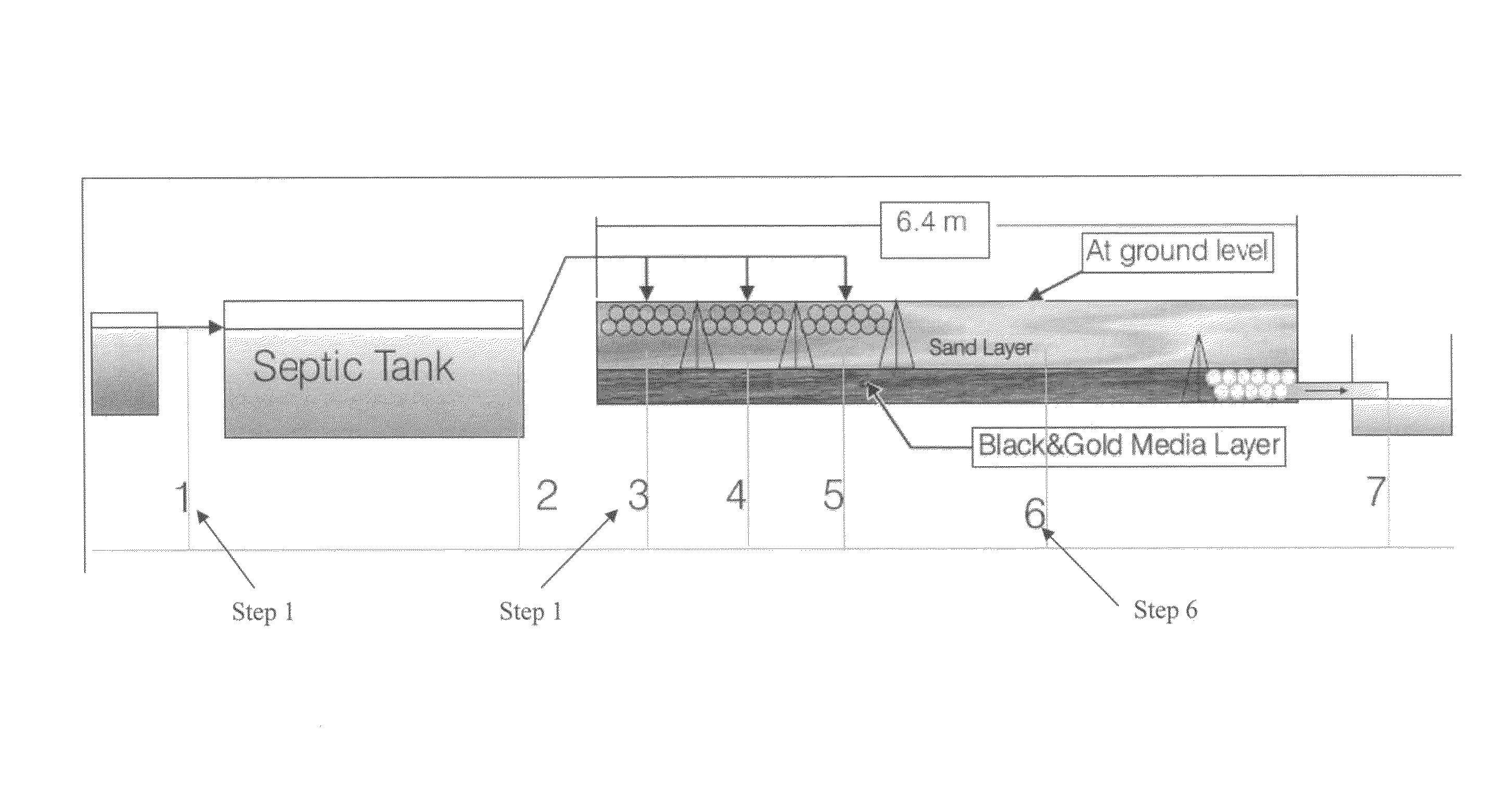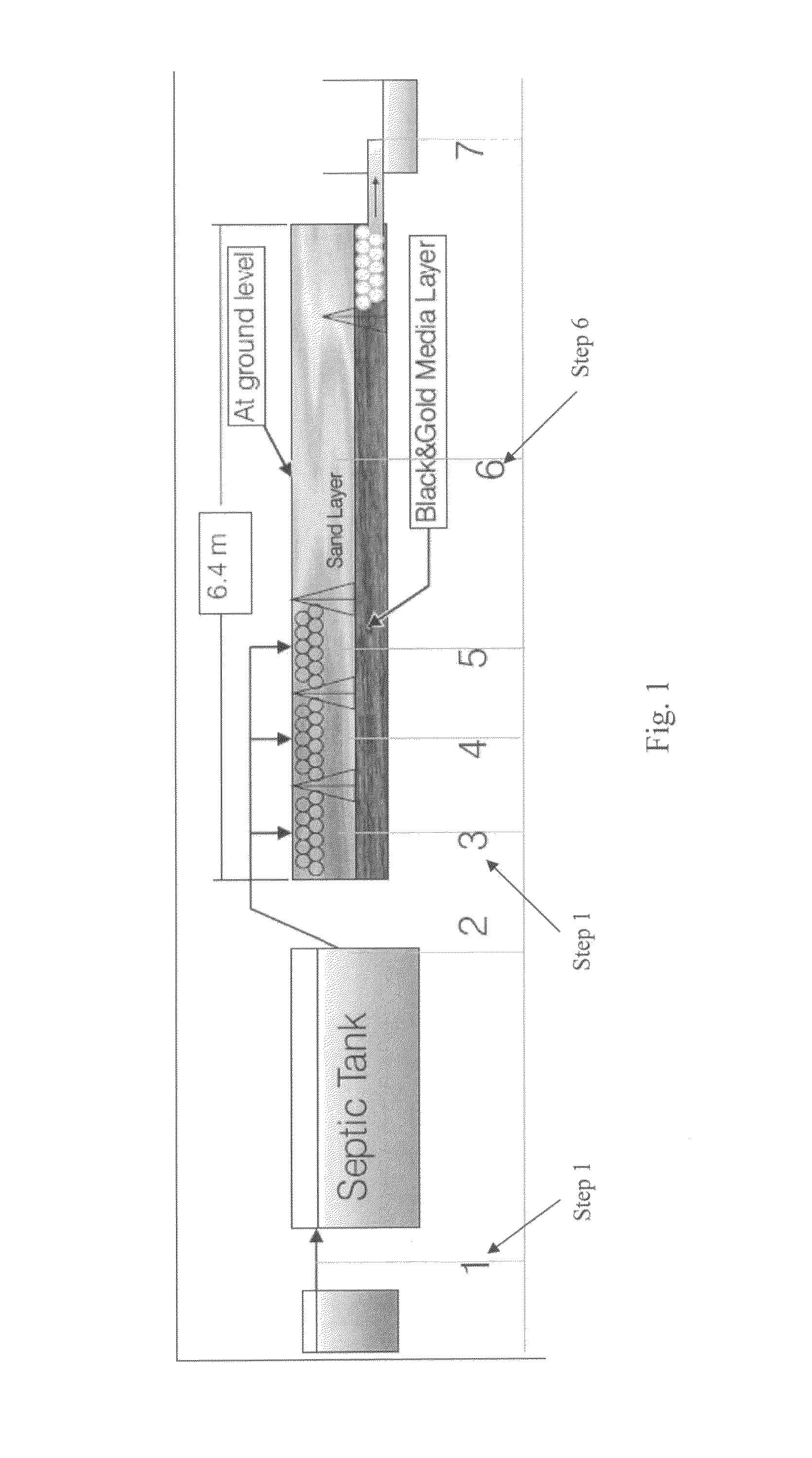Green sorption material mixes for water treatment
a technology of sorption media and water treatment, applied in biological water/sewage treatment, calcareous fertilisers, separation processes, etc., can solve the problems of adversely affecting public health, centralized sewage collection, treatment and disposal, and particularly vulnerable upper floridian aquifers to impacts, etc., to achieve lower cost, lower maintenance burden, and higher benefit cost ratio
- Summary
- Abstract
- Description
- Claims
- Application Information
AI Technical Summary
Benefits of technology
Problems solved by technology
Method used
Image
Examples
Embodiment Construction
[0092]Before explaining the disclosed embodiments of the present invention in detail it is to be understood that the invention is not limited in its application to the details of the particular arrangements shown since the invention is capable of other embodiments. Also, the terminology used herein is for the purpose of description and not of limitation.
[0093]Engineered, functionalized, and natural sorption media can be used to treat stormwater runoff, wastewater effluents, groundwater flows, landfill leachates and sources of drinking water for nutrient removal via physicochemical and microbiological processes. They include but are not limited to sawdust, peat, compost, zeolite, wheat straw, newspaper, sand, limestone, expanded clay, wood chips, wood fibers, mulch, glass, ash, pumice, bentonite, tire crumbs, expanded shale, oyster shell, and soy meal hull. This approach has “green” implications because of the inclusion of recycled material as part of the material mixture promoting t...
PUM
| Property | Measurement | Unit |
|---|---|---|
| concentrations | aaaaa | aaaaa |
| concentrations | aaaaa | aaaaa |
| concentrations | aaaaa | aaaaa |
Abstract
Description
Claims
Application Information
 Login to View More
Login to View More - R&D
- Intellectual Property
- Life Sciences
- Materials
- Tech Scout
- Unparalleled Data Quality
- Higher Quality Content
- 60% Fewer Hallucinations
Browse by: Latest US Patents, China's latest patents, Technical Efficacy Thesaurus, Application Domain, Technology Topic, Popular Technical Reports.
© 2025 PatSnap. All rights reserved.Legal|Privacy policy|Modern Slavery Act Transparency Statement|Sitemap|About US| Contact US: help@patsnap.com



